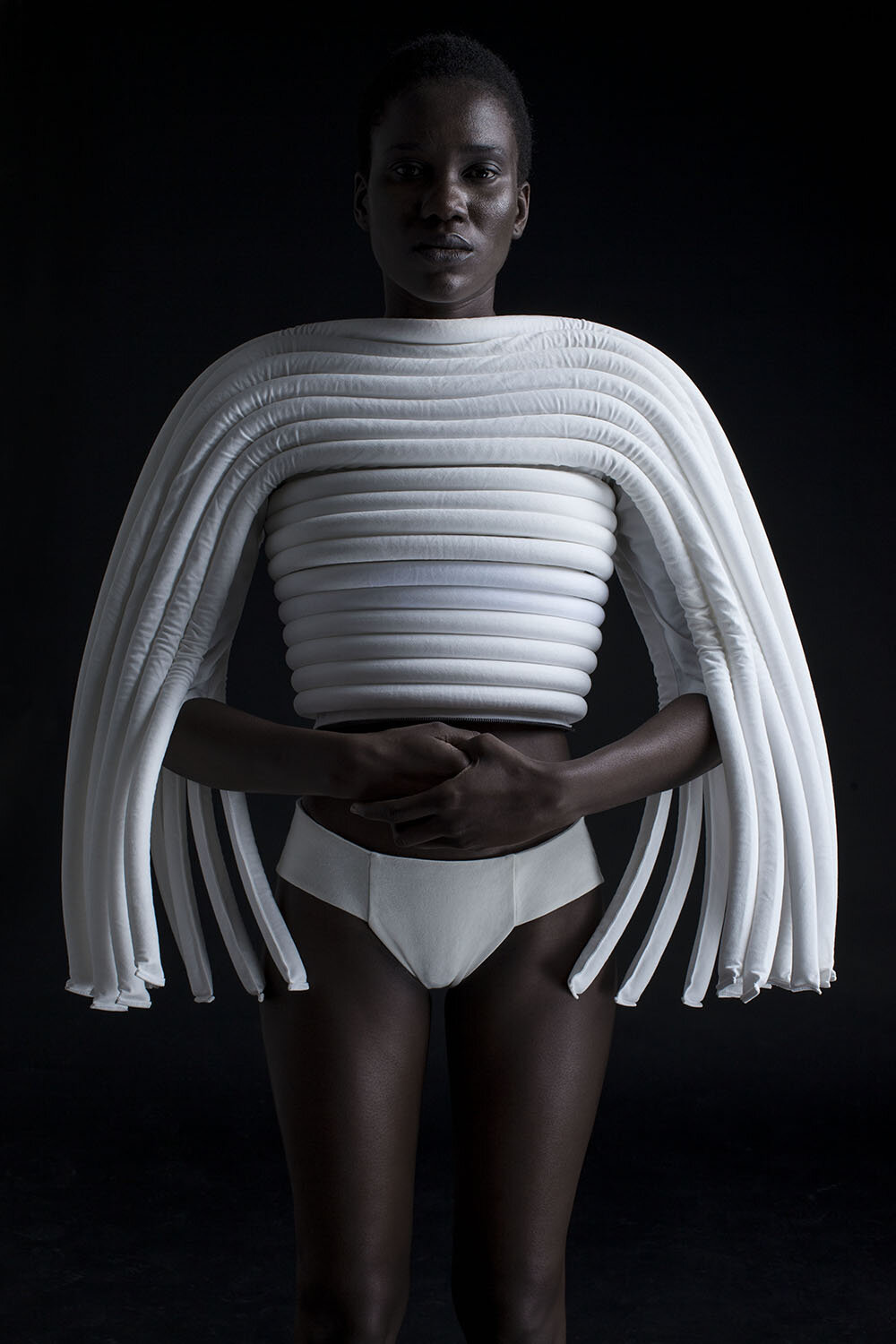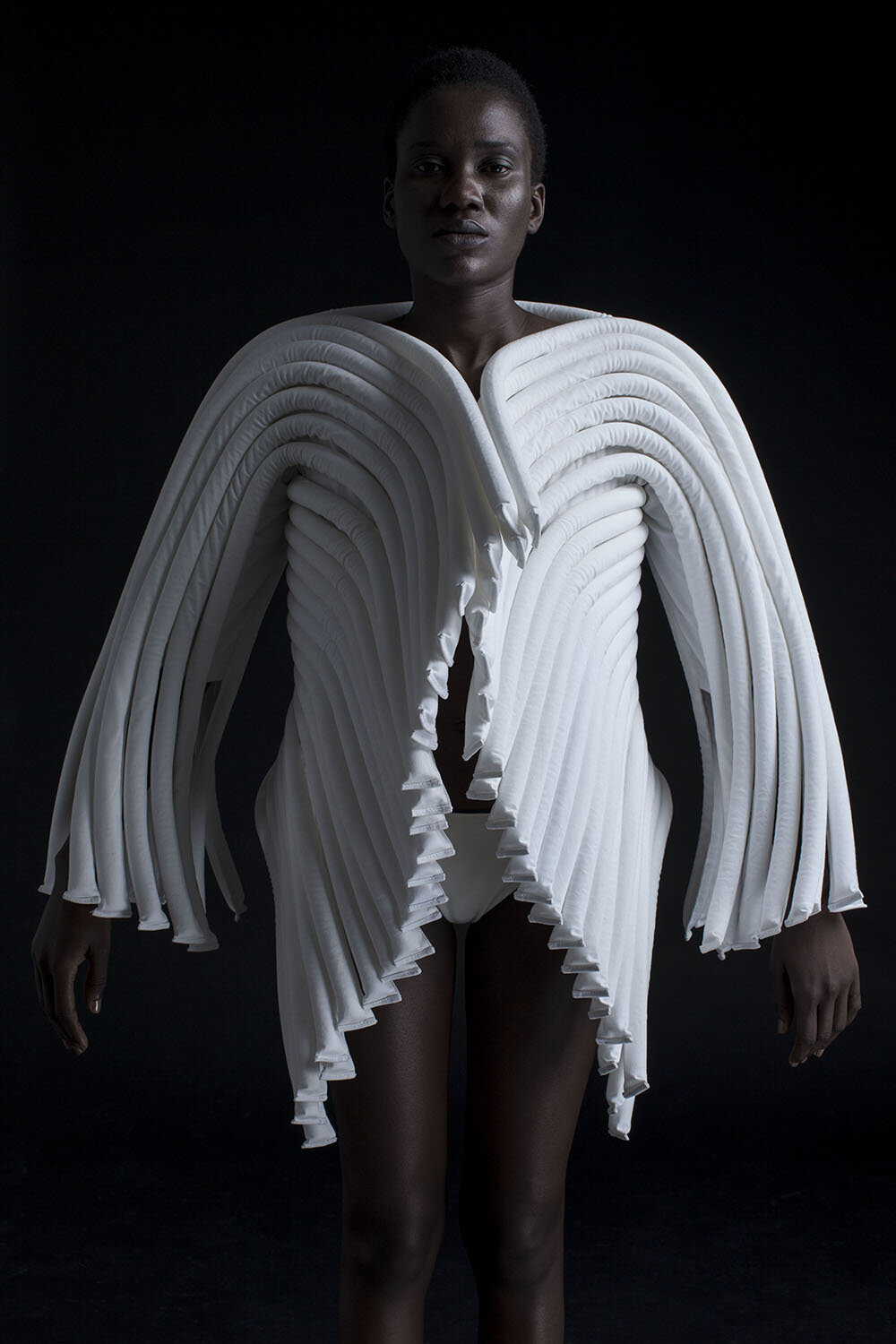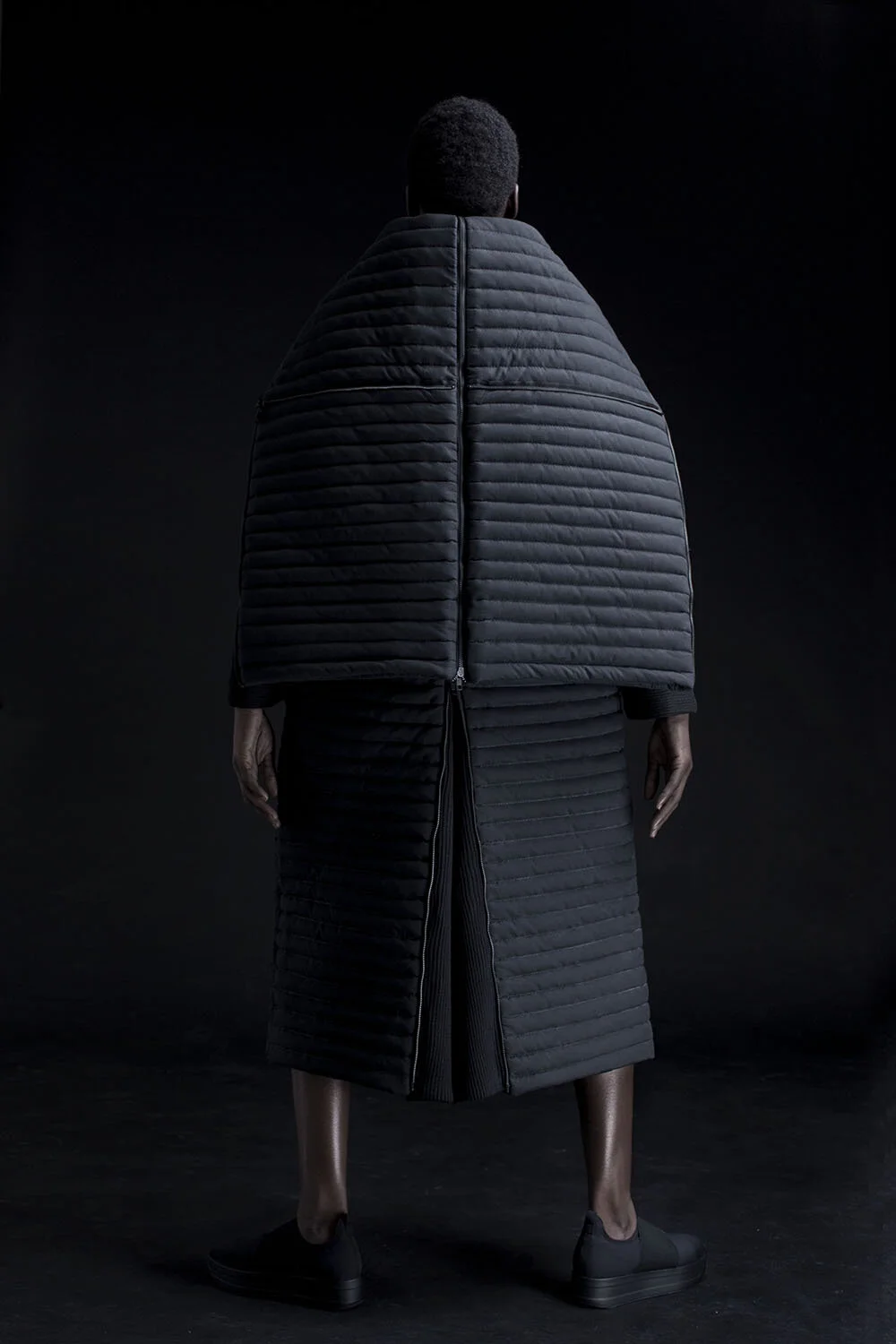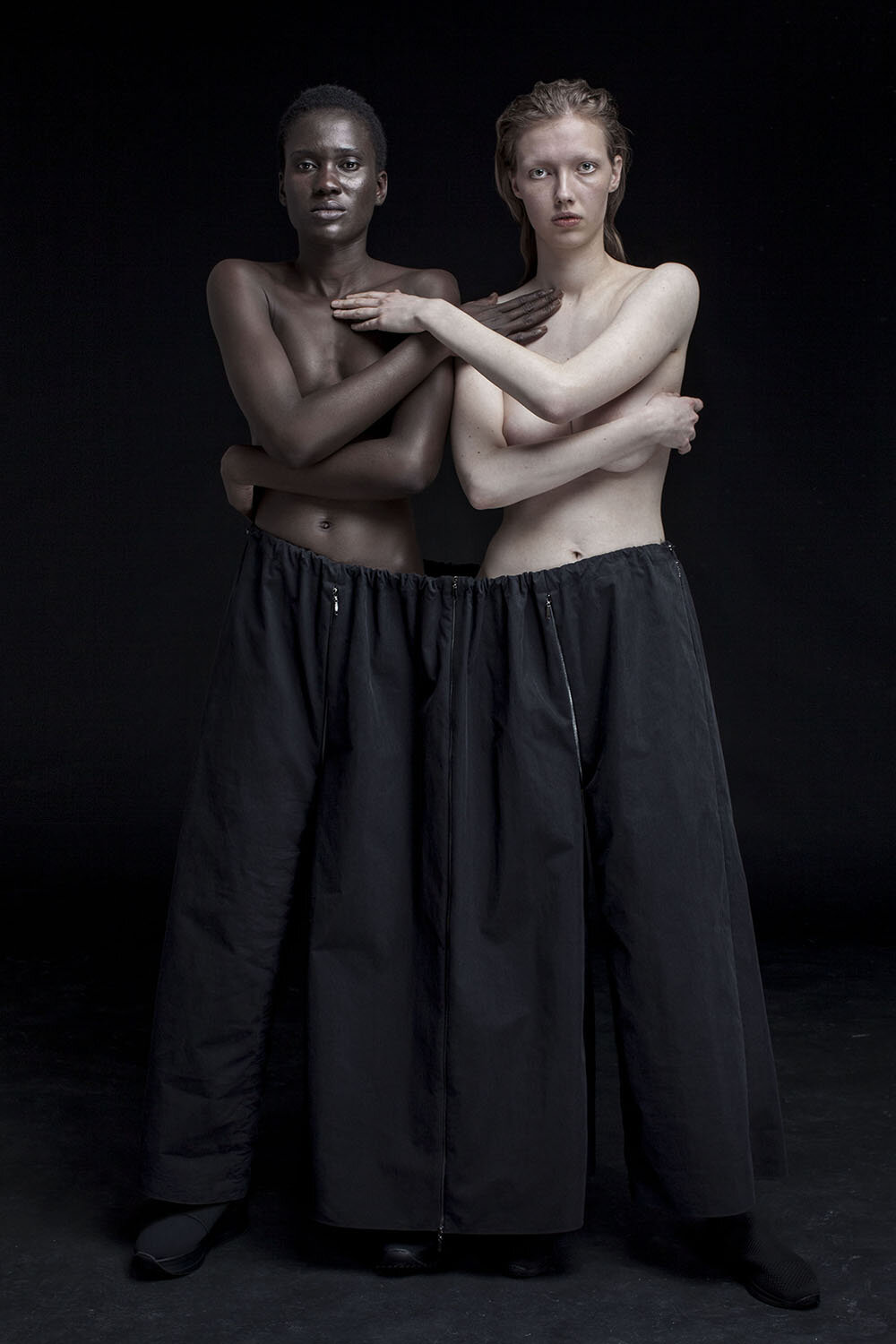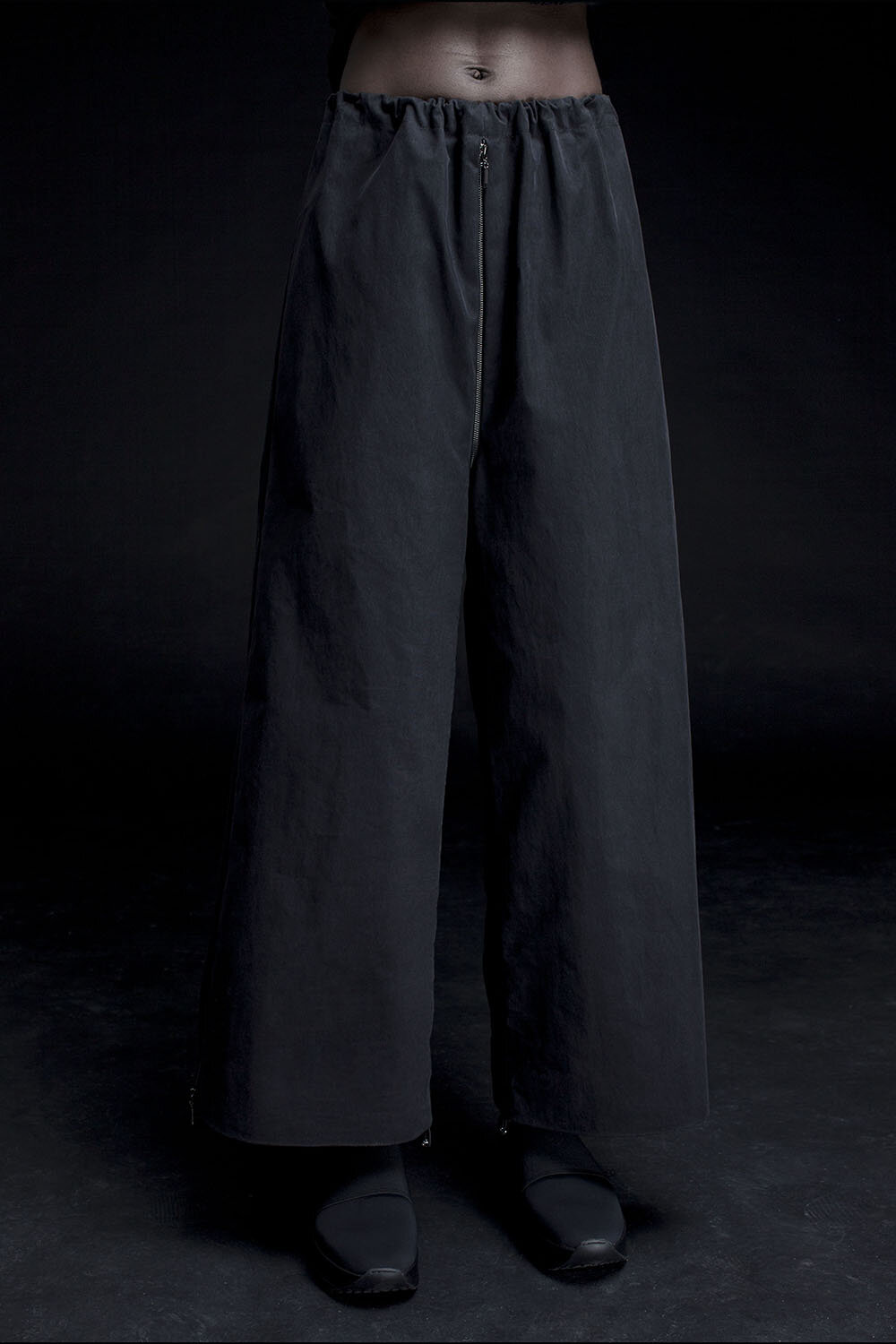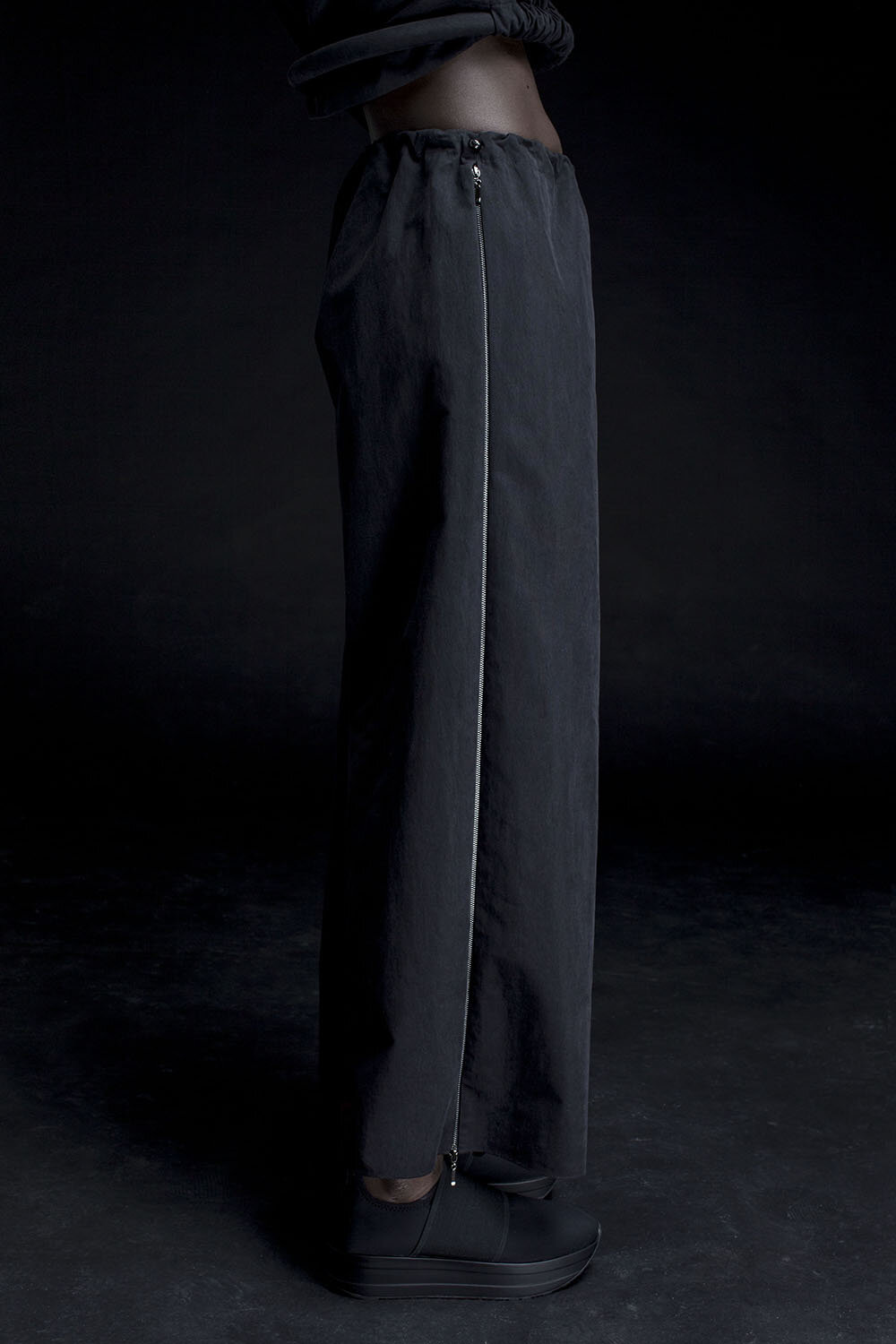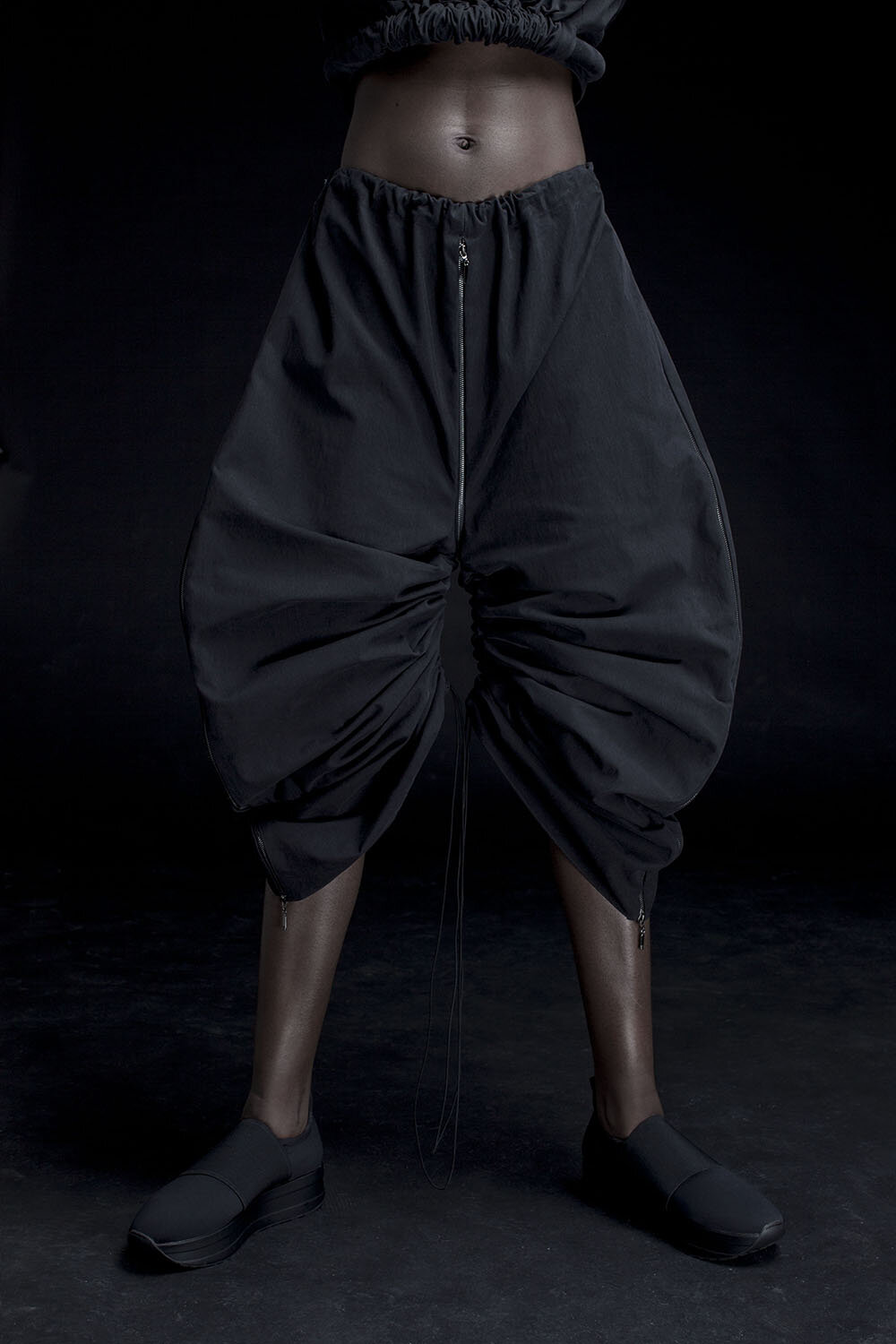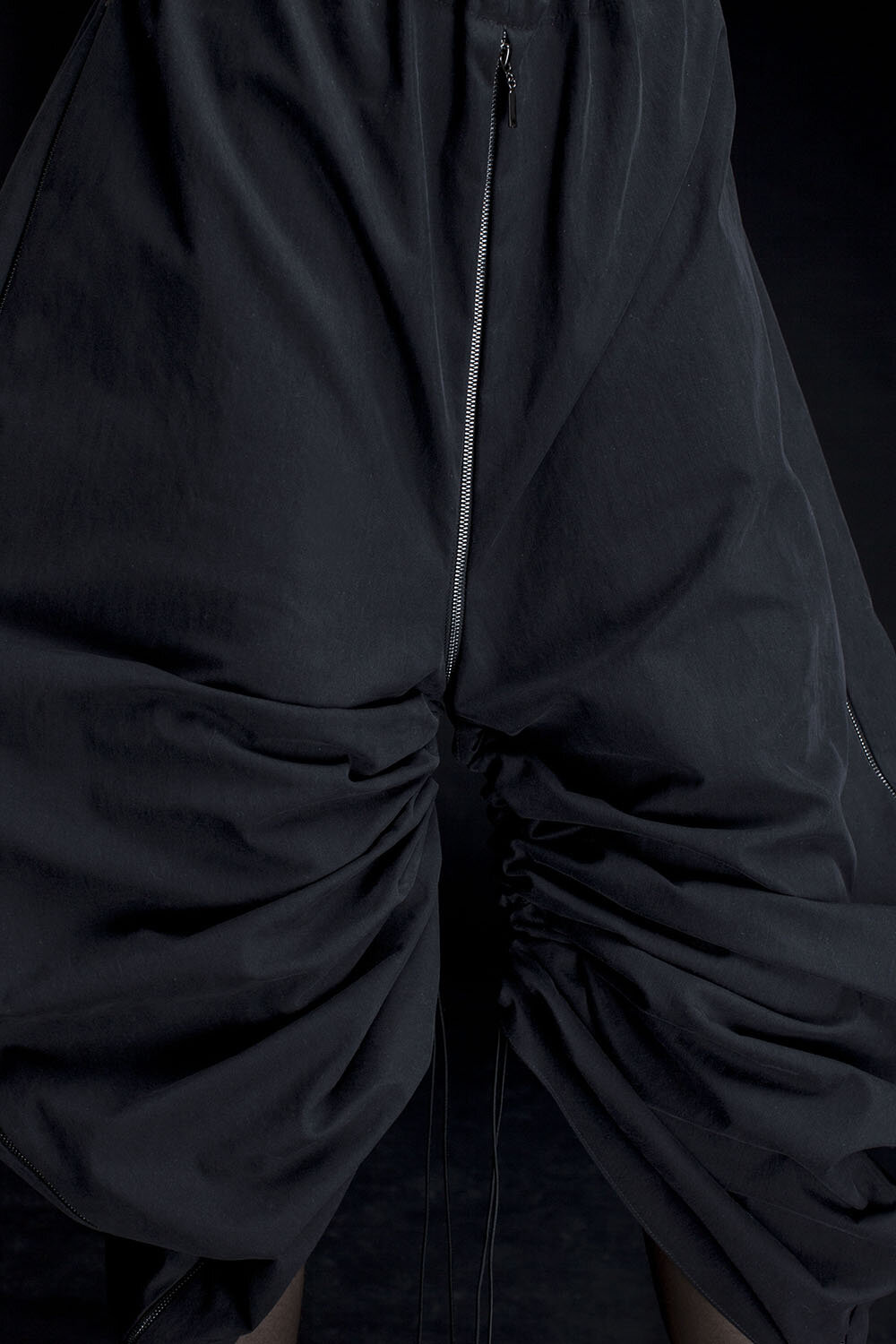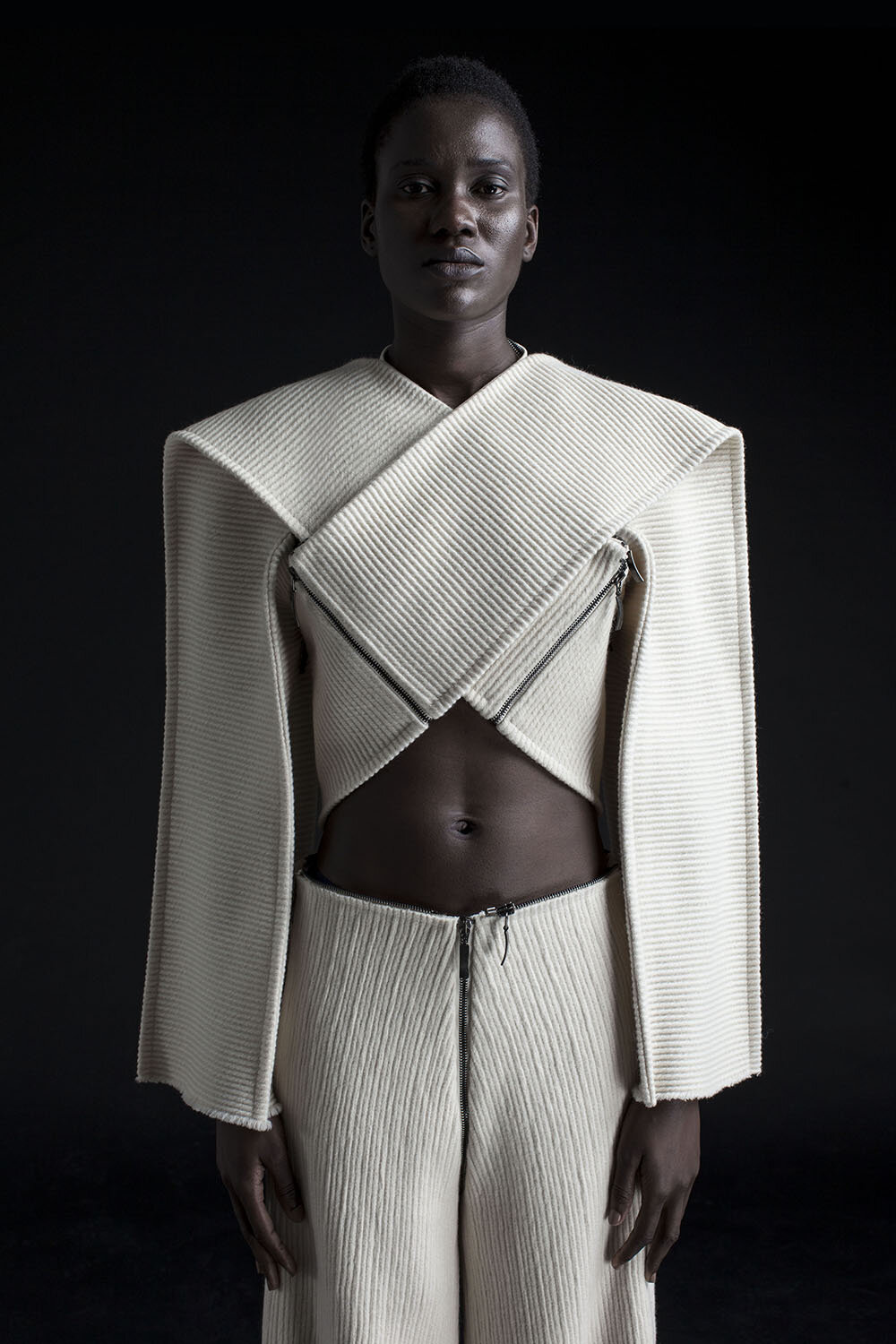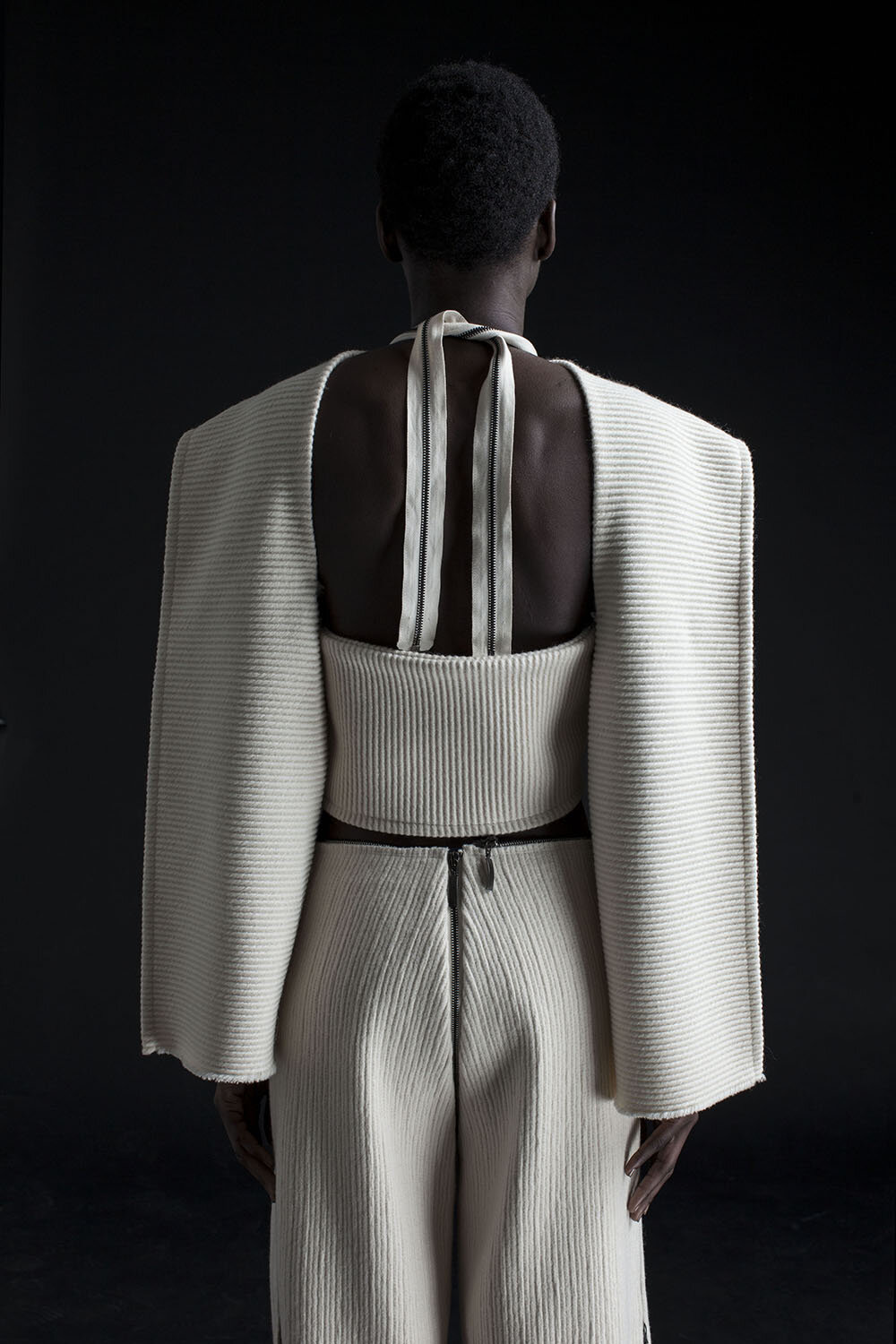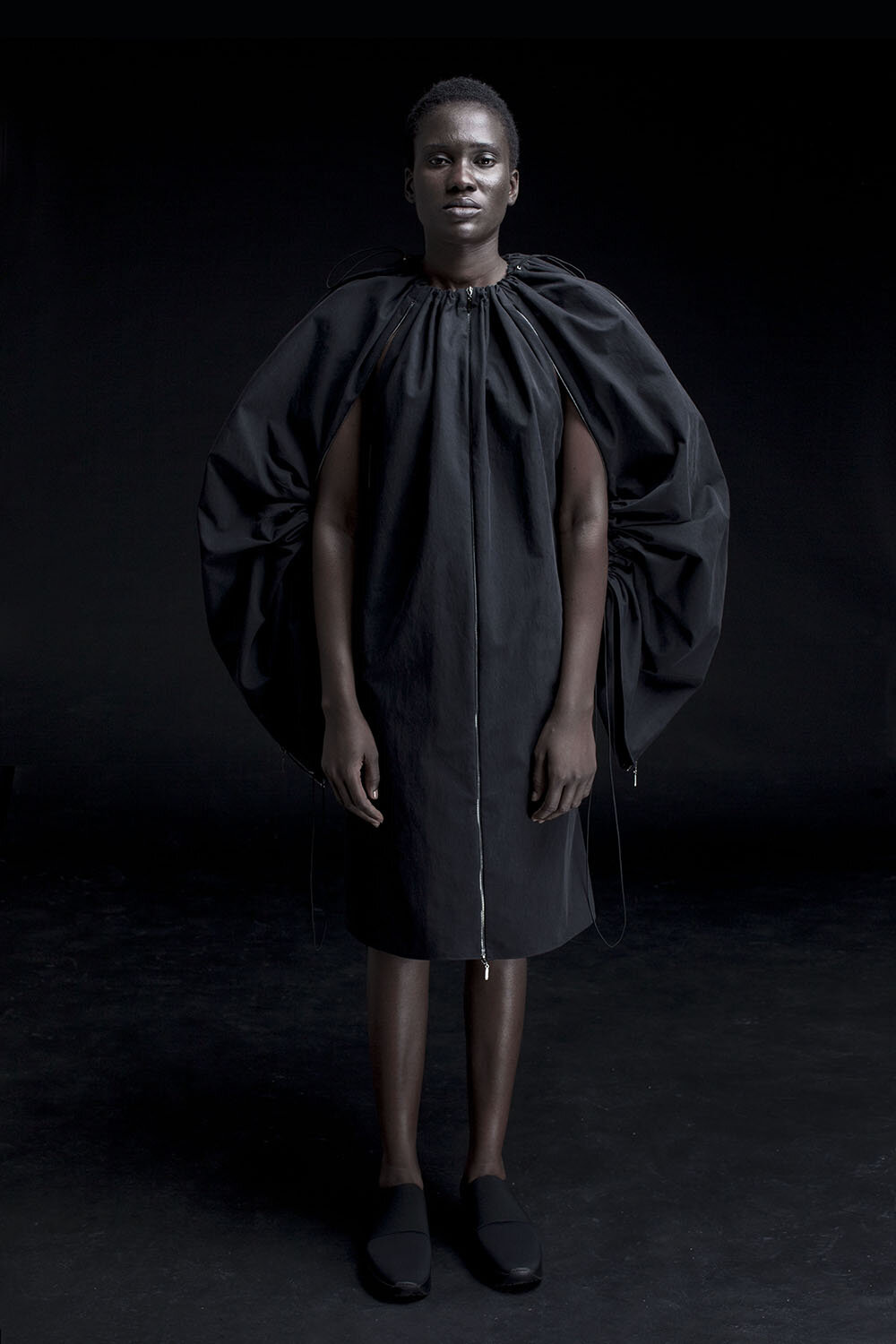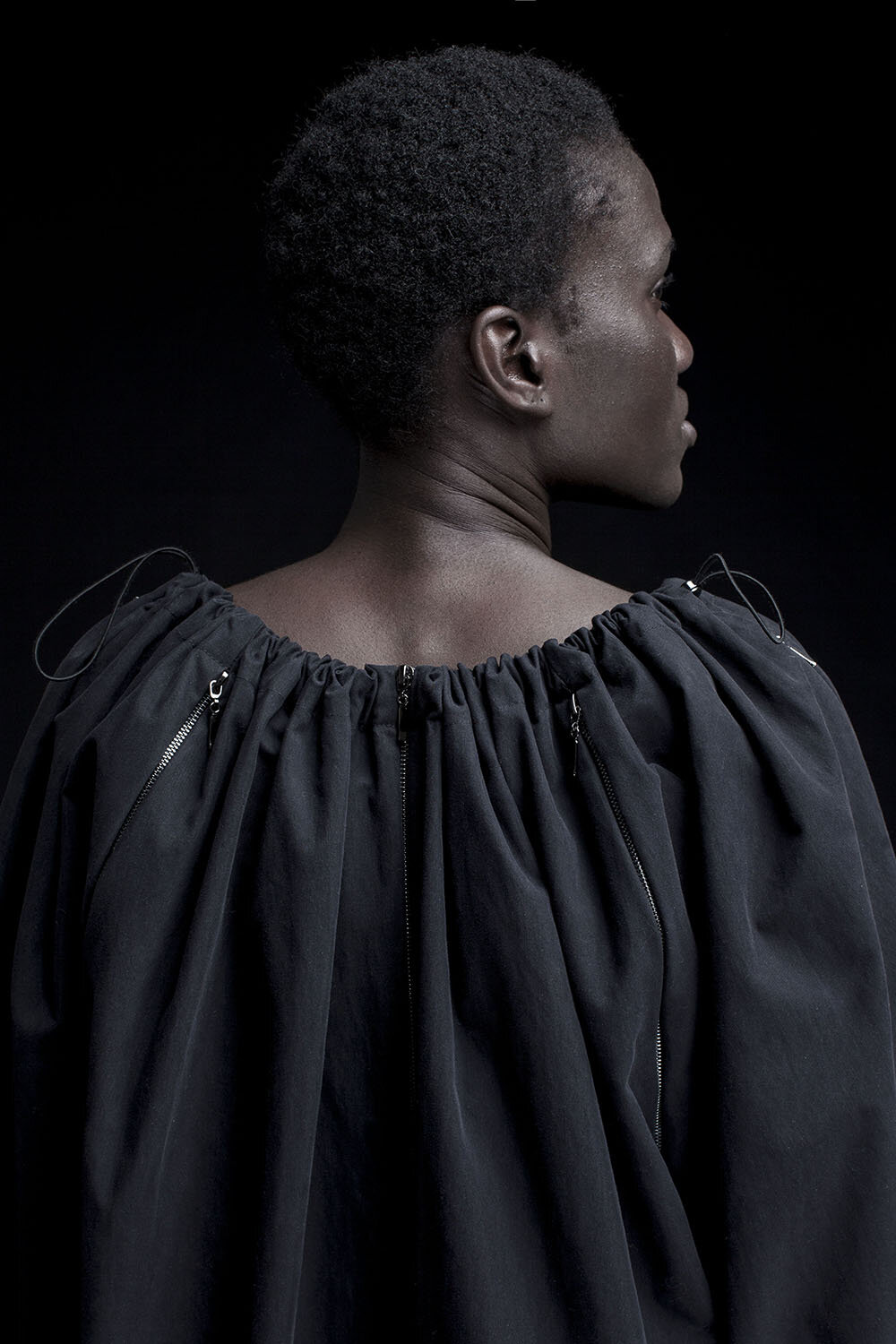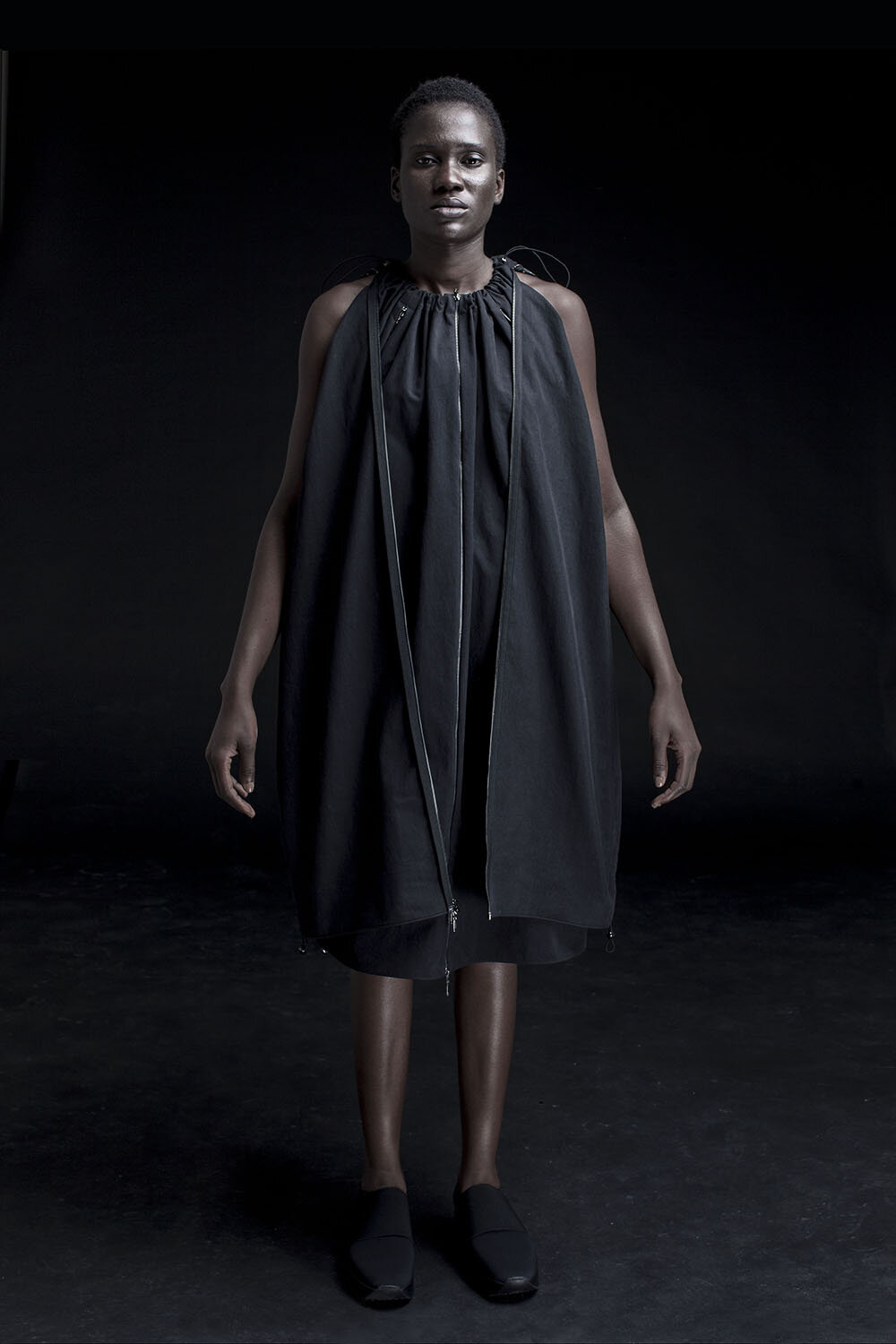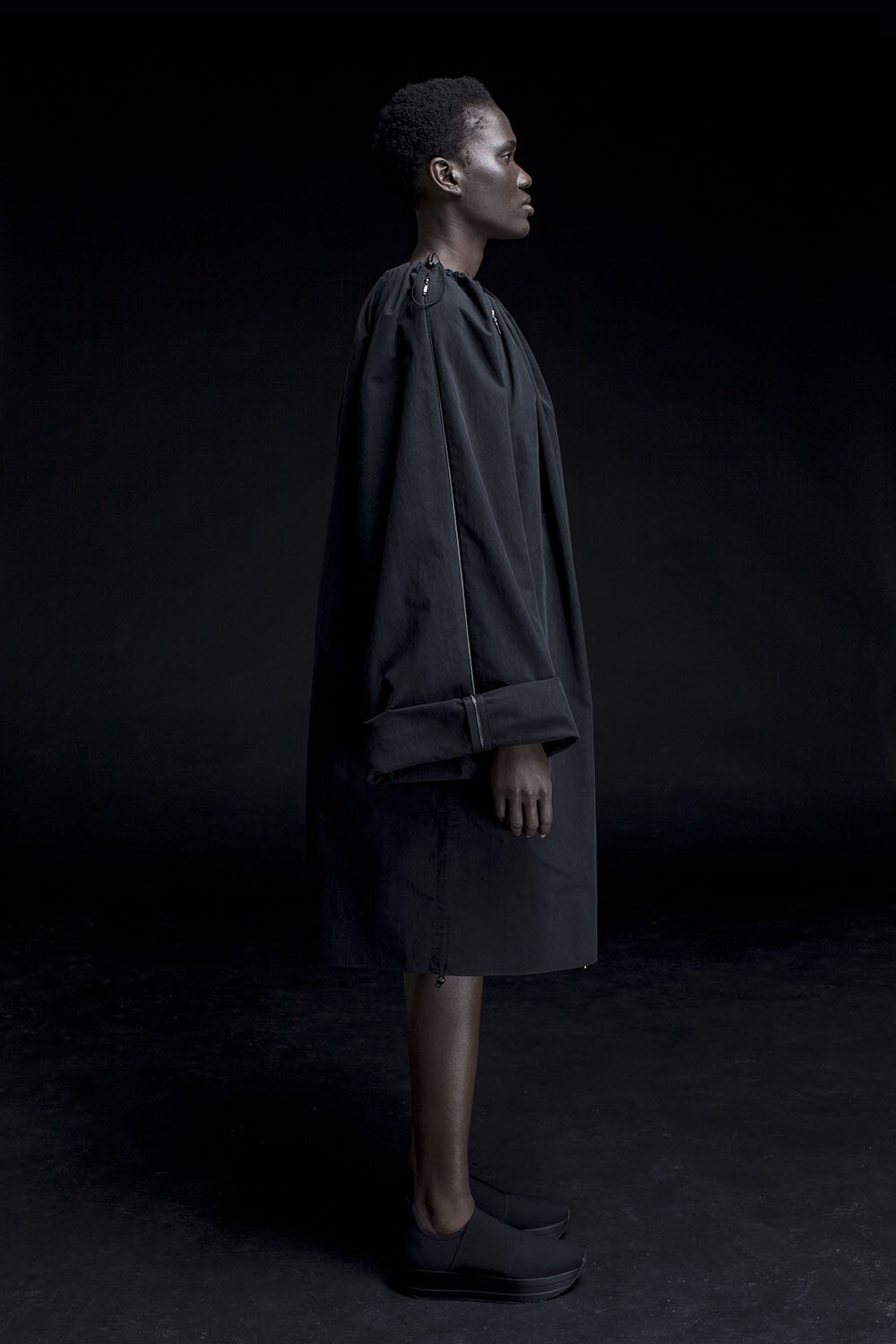MULTI-FUNCTIONAL CLOTHING AS THE FUTURE OF CONSCIOUS FASHION: IN CONVERSATION WITH DESIGNER IRINA DZHUS
DZHUS is a conceptual womenswear brand I discovered in 2015 when I was invited to Ukraine Fashion Week as a speaker. Launched in 2010 by Ukrainian designer and stylist Irina Dzhus, the namesake label strikes as avant-garde and fundamentally utilitarian. DZHUS is known for its innovative cuts, multifunctional and experimental garments underpinned by an austere and industrialist aesthetic. Short-listed for the International Woolmark Prize in 2015, DZHUS has been showing at Ukrainian as well as Paris Fashion Week and has been featured in Vogue, Dazed&Confused, Harper's Bazaar, Marie Claire, Elle, Elle Decoration, Cosmopolitan, L’Officiel, Kaltblut, Dezeen.com to name a few.
The brand’s ideology stands for consciousness and humanity and is ethically manufactured using cruelty-free and vegetarian-friendly materials. Throughout the years, collections have been saturated with innovative pattern making ideas. The brand also uses cruelty-free materials, and for their quilted garments have opted for eco-friendly hemp insulation, engineered by DevoHome.
For her latest collection entitled “CORPUS”, Irina Dzhus has dedicated her craft to anatomy and the architectonics of the body, which she sees as incarnated in complex transformable structures resembling exoskeletons. These structures mutate and interact with each other in exquisite mechanisms that offer endless possibilities, as if a deep sense of play was around the corner, in stark contrast with the collection’s monastic undertones. Or is it a preparation for a future world where garments will be required to last more than a season or a trend, and answer to multiple lifestyle needs via interchangeable parts.
Irina Dzhus’s collection offers alternate solutions to clothing consumption showing that one garment, if conceived meticulously with mathematical precision, can become a weapon of style, prepare for all occasions, all needs, all environments. She challenges us to rethink the purpose of a garment, armed with the skills of an exceptional patternmaker and the mind of a designer hell bent on what innovation is about: question and explore it all. She states that “corporeal is not an antipode to the spiritual, but an essential medium for exploring ourselves.” Her creations prove that a considerate approach to consumption does not limit the experience of clothing but only enriches it. In our interview we discuss what creativity means to her, how her career got started and what is her vision for the future of fashion.
GW: Where are you from and where are you based?
ID: I am from Kyiv, Ukraine, and DZHUS is based out of there.
GW: How did you get started in your work which is at the crossroads of Art and Fashion?
I've dreamt of a becoming a designer since I was 5. A few years later, I've already created my first fashion sketches and even scrap-booked my own 'magazine'. Having decided back then to dedicate my life to creation of clothes, I've never doubted since. I finished an art school, then graduated from Kyiv National University of Technologies and Design (which I'm not fond of, due to the very outdated education program) and completed an internship with a Ukrainian conceptual designer Victoria Krasnova, which has been a truly priceless experience.
GW: What is the main inspiration for your latest collection?
ID: Our AW19 designs are inspired with the complex morphology of all biological organisms, and especially the architectonics of human anatomy. The innovative cut of the outfits offers multiple wearable transformations, paying honour to the phenomenon of mutual influence of the body's constitutive parts.
GW: How do you research for your creations? Do you have a specific process? I am curious as to what inspires you the most and your methods of creativity.
ID: I never make a methodical research, sketching from books and pinning inspiration to a wall, let alone mood boards. Everything is in my head, where I have kind of an inset filter, deconstructing the reality, picking useful elements from it and transforming those into design concepts. My attention is mainly attracted to miracles of nature, imperfections of man-made objects and everyday life illusions. In most cases, I embody only the main principles of my inspiration source into my designs, but sometimes the idea is to integrate its most peculiar features into a design quite literally and explore the utilitarian potential it gives to a garment.
GW: Your work is incredible in terms of the level of craft, the construction and attention to detail, let alone the conceptual quality. I feel it sets you apart. How has your craft and artisanship grown over the years? You are so dedicated to it.
ID: When I'd just started releasing collections, my highest priority was materialising the visual concepts I had in mind. Quite soon it turned out that meeting customers' requirements to wearability and comfort was a more complicated task than designing outstanding pieces - and therefore, more interesting. Thus, by self-educating and experimenting, I gradually learnt to develop my concepts in a highly utilitarian product offering a vast variety of styling options.
Speaking of craftsmanship, it too came only with experience. The feeling of the right detail and confidence about technological solutions wasn't easy to achieve. What has always been more intuitive and fun for me is pattern-making. With my exaggeratedly structural vision, I'm always enjoying the construction process most.
GW: What is your clientele like? What's an exciting market you're getting into? You are an artist but I'm also curious about the business side of what you do.
Our customers are truly unique and most creative personalities. Those who I know are artists, architects, designers, musicians, performers, gallerists or other art-related professionals. However, some are business women or even housewives - what all our customers have in common is their sophisticated aesthetic taste and non-conformist world view.
Besides private customers, there are 2 other important categories of our clients: wholesale buyers for concept stores, who we meet every seasons while presenting our collections in Paris, and B2B clients who work in cinematography, show business and beauty industry - they order our pieces for their projects: movies, performances, hair shows etc.
GW: As an experimental designer, what do you think of the rental system as a sustainable solution?
ID: The rental system has obvious financial benefits for customers, and it sounds like a great idea for outfits that are so remarkable a person can only wear them once, for a very specific occasion. However, in terms of sustainability, I’m not so sure it makes sense: a clothing item has to be intensely cleaned after every wearer, and it also takes a lot of logistics to arrange all the process. Eventually, due to such frequent use, garments will wear out much faster and are likely to be thrown away when no longer looking appropriate for hiring. Instead, the piece could just be kept in its owner’s wardrobe, waiting for another chance to be worn (maybe for decades, why not?) or to be given or sold to its next owner, who probably also won’t just throw this special piece out - unlike the rental service managers.
For designers, especially with small businesses, keeping stock for rent isn’t beneficial either: investment in manufacturing pays out at once with a purchase, but if an item isn’t popular for rent, it might take a long time to get any profit from it.
Therefore, the best idea seems to be not renting but reselling or donating unwanted clothes that can still be used.
Speaking of my brand, instead of keeping a separate stock for rent, we practice rent of catwalk samples in between projects they are involved in, which is a quite a lifehack, bringing extra funds for our production. However, as a conceptual brand, we keep the right to approve or deny rental of our pieces to each particular client, as there exist projects and occasions we don’t agree to be part of, and no profit would change that decision. Lastly, every person’s inner feelings about hired clothes are different. For example, to me as a consumer, it means a lot to feel the special connection with objects owned by me and no one else. This brings harmony in my life and self-positioning, and I would never achieve the same from rented things.
GW: How do you envision the future? Your preferable future?
I believe in the future that is based on ethical and considerate approach to living, in which responsible production and consumption, tolerance and humanity are an à priori norm, not a media trend. This is my strongest hope, despite any scepticism or pessimistic forecasts. These are natural - what religion hasn’t faced misunderstanding at the beginning?
GW: What do you think about fashion trends?
In my design work, I neither follow particular trends, nor protest against them. Some of DZHUS pieces appear to be seasonal must-haves, whereas others would look out of place in a trend report - it's never done on purpose. Speaking generally, the artificial nature of the modern trends is getting more and more obvious. I mean, even 20 years ago people wore trendy things because they sincerely believed that those were literally the coolest pieces ever.
Now that trends change so rapidly, people's conscience doesn't get used to them very much, and everyone treats trends ironically, as toys they are offered for a short time used to play the fashion game.
GW: If you had to sum up the creative process in 1 word what would it be?
Innovation.
GW: What is innovation for you? It's such an overused word but what does it truly mean for you?
To me, innovation is the crucial and inevitable aspect of any up-to-date creativity. I am convinced that in the era of oversupply, the fact one has a desire and an opportunity to release a product isn’t a sufficient reason to integrate it to the market already overburdened with similar goods. Nowadays, it only makes sense to come up with something really unique and worth spending the precious resources.
Speaking of design in particular, innovation lies at its core. Design is inseparable from invention. Creating without innovations can be called manufacturing or decoration but definitely not design.
| Interview by Geraldine Wharry
LOOKBOOK CREDITS
| Photo: Pymin Davidov @pymin_davidov
| Styling: Irina Dzhus / DZHUS Style Studio @irina.dzhus
| Makeup & hair: Marina Averyanova / Y.Vision Creative Group @averyanova_mkmua
| Models: Adama Diedhiou, Valentina Plyushch @valentyna_omela / Direct Model Management Styling assistant: Andrii Popov @popovandrii
| Vegetarian-friendly shoes provided by INTERTOP
CONTACTS
| Email: studio@irinadzhus.com
| Facebook: www.facebook.com/dzhus.conceptual.wear
| Instagram: @dzhus.conceptual.wear






